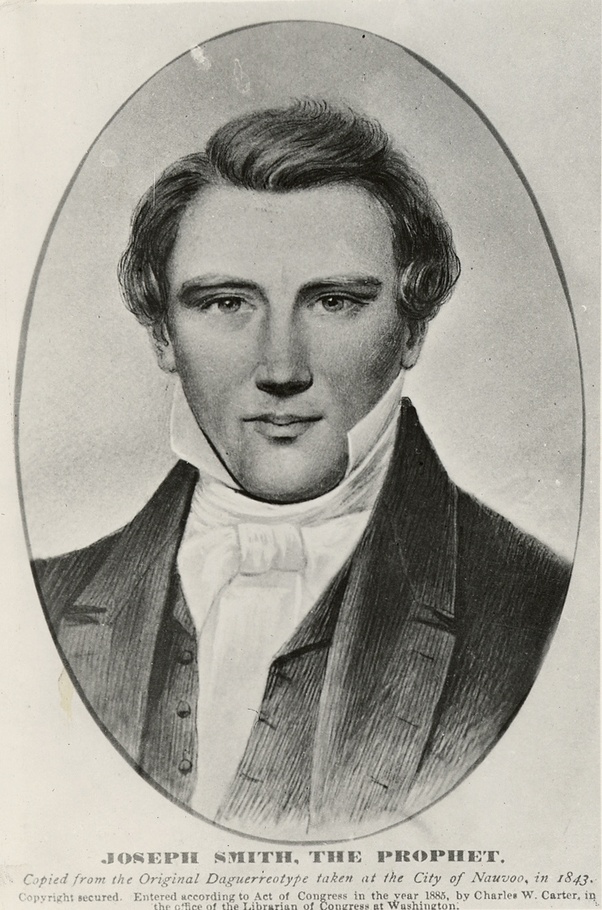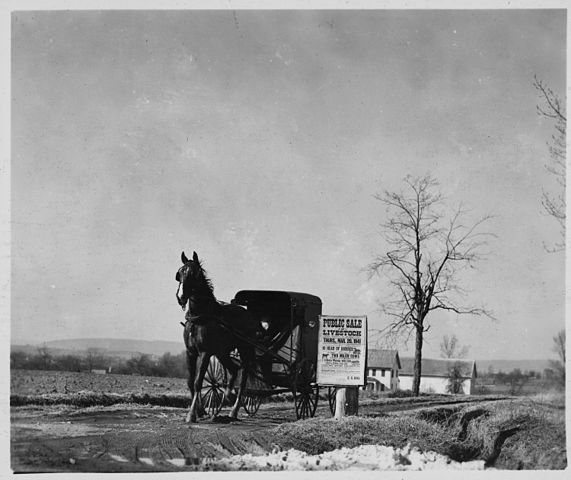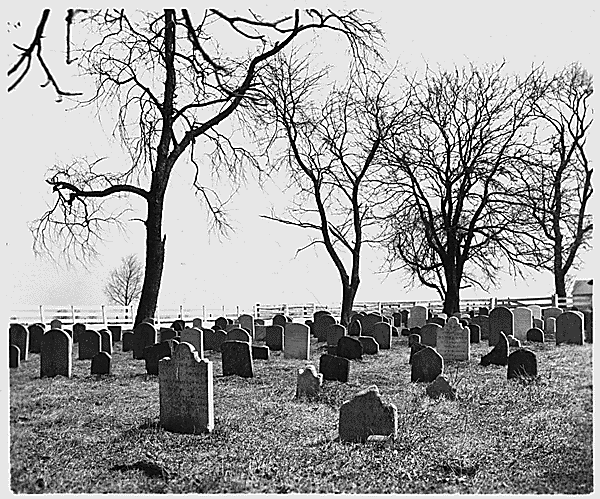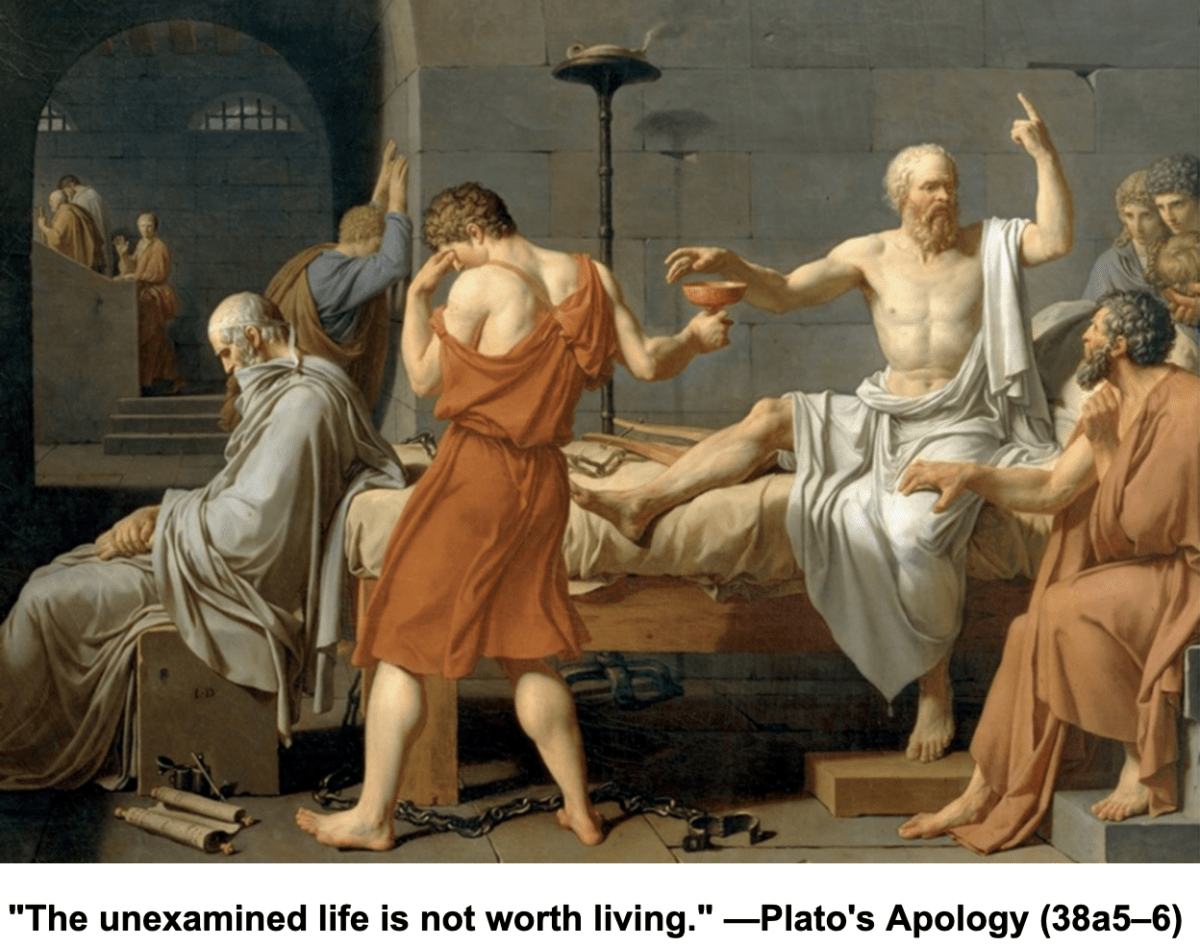Several years ago Martin Marty, a prominent scholar of American Religion, in response to a question posed by the church’s Public Affairs department, said “The most important issue facing Mormons in the next ten years is maintaining the posture that you are the only true church, to the exclusion of all others, and then trying to get along with those you exclude.” For those who believe he has a point—and I do—there is a solution to this problem, but it will require us to rethink two of our foundational truth claims:
(1) A few generations after the death of Christ there occurred a Great Apostasy owing to the wickedness of the people. As a result, priesthood authority was taken from the earth, ordinances and doctrines were corrupted, and the heavens closed up, allowing people to be deceived by the philosophies of men.
(2) This period of spiritual darkness came to a dramatic end with the First Vision and the restoration of Christ’s church in its original form. That church—The Church of Jesus of Jesus Christ of Latter-day Saints—is the kingdom of God on earth.
As to the notion that revelation suddenly ceased two thousand years ago, there are numerous documented instances of individuals receiving inspiration, spiritual manifestations, and visions in the centuries before Joseph Smith. Likewise, during that time many writers, religious leaders and theologians expounded with great insight on doctrines such as the atonement, charity and grace.[1] Sometimes their understanding of those teachings surpasses our own. Simply stated, divine guidance did not end and the fundamental principles of the gospel did not disappear in the centuries following the Savior’s ministry.[2]
On the question of doctrinal changes, while the Lord did say, “their creeds were all an abomination,” this statement likely pertains to the treatment by certain churches of heretics who refused to confess a particular religious dogma; it doesn’t mean their doctrines are completely wrong. While certain ordinances and doctrines were changed, we should hesitate before treating all such modifications as “corruptions.”
Two different modes of baptism, for example were performed in the Book of Mormon, each of which, in its time, was acceptable.[3] In our day, the administration of the sacrament has changed, with water being substituted for wine. And our temple ordinances have undergone numerous revisions.[4] Some of these changes reflect an enhanced understanding of the pertinent covenants while others are cultural accommodations. As to church doctrine, there have been fundamental changes in several LDS teachings over the past 150 years. The Priesthood Ban, which was frequently taught as doctrine, has been jettisoned, along with Brigham Young’s Adam-God doctrine.
For these and other reasons, many LDS scholars now see the apostasy not as a period of darkness or falsification of gospel teachings but as a loss of priesthood authority.[5] Don’t get me wrong. The loss of priesthood authority is a big deal. But it’s not the only big deal.
There are also several problems with the idea that the Mormon Church is “Christ’s New Testament Church restored.”[6] For starters, in the first century there was no centralized organization to which all followers of Christ pledged their allegiance. There was no Rome or Salt Lake and no correlation program or standard works. Instead, there were diverse Christian communities. Some continued to follow Jewish Sabbath rituals and dietary laws, while others—primarily the Gentile Christians in Asia Minor and Rome who embraced the teachings of Paul—had their own set of unique beliefs.[7] It wasn’t until the third century, long after priesthood authority had disappeared from the earth, that a unified Christian Church came into being.[8]
So how did this notion of a “restored church” acquire such stature in our faith? Well, we can rule out Joseph Smith because he never wrote or talked about a “restored church.” Nor did he, according to LDS scholar Patrick Mason, ever use the phrase “restoration of the church.”[9]
The first time the words “restored church” were used in a General Conference talk was 1908 and thereafter only sporadically until around 1950 when it became more common. But its usage in the past 10 years has spiked dramatically, more than doubling.[10] The same is also true for the phrase “restored gospel.” It was used just three times in Conference addresses in the 19th century and only gained serious traction in this century.

Nevertheless, our modern-day scriptures, along with Joseph’s writings, are replete with references to “the restoration.” But the prophet’s principal focus was not on the restoration of a thing—a church, the gospel, etc.[11]—but of a people: the entire House of Israel and the Lamanites. Which is to say, all of the sons and daughters of our Father in Heaven.
Nephi also dwelt often on this theme, underscoring God’s preoccupation with restoring the various branches of Israel. The Lord, as the prophet explained, wants to keep the promises he made to various societies and nations with a view towards “bring[ing] about the restoration of his people on earth.”[12] And the Savior renewed this pledge in modern times when he made clear to Joseph Smith his singular goal: “the restoration of his people.”[13]
As Professor Mason notes, “the vast majority of references in scripture and Joseph Smith’s teachings are to the restoration of the house of Israel in the last days.”[14] And yet these scriptures are among the least discussed and quoted in our community. While they were immensely popular in the church in its early years, their usage has steadily declined after 1870. Indeed, references to Israel’s restoration in Conference talks reached an all time low in the past twenty years.
Not only does the Lord’s restoration project focus on Israel in the broadest sense of the term, it looks to the future, not the past. It wasn’t completed when Joseph Smith established The Church of Jesus of Latter-day Saints. Rather, as President Uchtdorf once noted, it is “an ongoing process,” one we are “living in right now.”[15] As we are told in our Articles of Faith, there are many great and important things the Lord has yet to reveal.
Many believe that our church will be the exclusive vehicle through which the Lord completes the restoration process, that we can add to the truths possessed by others but they have little to teach us. We are, after all, “the one true and living church” with which the Lord is “well pleased.”[16]
But this phrase—which occurs only once in all of scripture—may not mean what we think it does. In actuality, it was a common figure of speech in Joseph’s day, according to Mormon scholar Philip Barlow. It connotes loyalty, a pledge of unwavering support, one, for example, Joseph used to assure Emma she has “one true and living friend on Earth, your husband….” He wasn’t belittling her other friendships; rather, he was simply saying, “Come what may, I’ll be by your side.” Similarly, the Lord was expressing his devotion to the work Joseph began and his successors have continued; he was not implying that all other churches were false and dead.
To the contrary, the Book of Mormon makes it clear that the Lord remembers all nations, as well as those upon the isles of the sea, all of which shall receive his word.[17] The Savior conveyed a similar message to Joseph Smith when he referred to “holy men that ye know not of” who were not under sin and whom the Lord had “reserved unto myself.”[18] Also, it behooves us to remember the fatal error of the Zoramites, who praised the Lord for separating them from the unwashed masses, and then expressed their gratitude by saying, “We thank thee, O God, for we are a chosen people unto thee, while others shall perish.”[19]
On a practical level, how can a church whose members comprise only two tenths of one percent of the world’s population pull off the restoration by itself? The Apostle Orson F. Whitney stated the obvious when he said the Lord’s work “is too vast, to arduous, for any one people.” The Savior “is using more than one people for the accomplishment of his great and marvelous work.” The efforts of others are equally vital, and they often “can do more good for the cause where the Lord has placed them.”[20]
God expects us to not only acknowledge the unique contributions made to the restoration process by others, but to learn from them. While virtually all faith traditions preach faith, caring for the poor, the Golden Rule and religious tolerance, many excel in other areas where we are lacking.
For example, Elder James E. Faust drew special attention to the compassion and forgiveness exhibited by the Amish in Pennsylvania after a deranged milk truck driver in 2006 shot ten Amish school children—five of whom perished—before taking his own life.


The entire Amish community, without hesitation, forgave this man, who was not of their faith, and sought to comfort his family. Brother Faust marveled at how “the whole Amish group [could] manifest such an expression of forgiveness.”[21] This was emblematic of Zion, forgiveness on a celestial plain.
The reverence and devotion with which the Jews approach the weekly Sabbath is awe-inspiring and almost without peer.

The Rabbi Abraham Joshua Heschel eloquently teaches that the Sabbath requires us to abandon “the realm of space” and enter “the realm of time, where the goal is not to have but to be, … not to control but to share, not to subdue but to be in accord.”[22] Similarly, their understanding of the Old Testament—the product of centuries of careful study not constrained by scriptural literalism and biblical inerrancy—far exceeds our own. Put in perspective, we Latter-day Saints are but mere tourists on this earth by comparison to the Jews. They, through their Patriarchal lineage, have been here since the creation.
As to the Buddhists, their meditation skills, which take considerable time and effort to develop, are a powerful form of introspection. When done properly, meditation can be a calming influence while simultaneously revealing both character flaws that need mending and the majesty of the divine. For a people who coined the nickname “The Beehive State” and are urged to be “anxiously engaged in a good cause,” perhaps some meditation would do us good.

We Latter-day Saints also bring much to the table, including priesthood authority, temple ordinances, and new works of scripture. But when sharing our faith with others, perhaps in addition to learning more about the beliefs of our listener, we should not make conversion our primary objective.
The wisdom of this approach is illustrated by an encounter between a Jewish author and the Dalai Lama, who, upon learning of his interlocutor’s faith, said: “You are a Jew? Judaism and Buddhism are very much alike. You should learn more about both and become a better Jew.”[23]

The Dalai Lama was not only extending an invitation to expand his guest’s spiritual horizons; he was also making the case for the universal application of President Uchtdorf’s memorable admonition, “Lift Where You Stand.” And in the process, he was validating Joseph Smith’s vision of the restoration, one that redeems the full House of Israel: each and every son and daughter of our heavenly parents.
[1] Eric Dursteler, “Inheriting the Great Apostasy,” Journal of Mormon History 28 (2002); pp. 23-29; Miranda Wilcox and John D. Young, eds., Standing Apart: Mormon Historical Consciousness and the Concept of Apostasy, (New York: Oxford University Press, 2014).
[2] Perhaps the most compelling evidence for this proposition is the Book of Mormon. As LDS scholar Richard Bushman has noted, “The theology of the Book of Mormon is very much 19th century theology, and it reads like a 19th century understanding of the Hebrew bible, as an Old Testament: that is, it has Christ in it, the way Protestants saw Christ everywhere in the Old Testament.” Indeed, the Book of Mormon is replete with phrases found in 18th and 19th century Protestant writings, such as “infinite atonement” and “demands of justice.” Podcast Interview with Richard Bushman, November 21, 2015.
[3] Compare the baptismal prayer used by Alma (Mosiah 18:13) with the one used by Christ two hundred years later (3 Nephi 11:24-25).
[4] Michael W. Homer, Joseph’s Temples: The Dynamic Relationship Between Free Masonry and Mormonism, (Salt Lake City, Utah: University of Utah Press, 2014).
[5] Charles R. Harrell, This is My Doctrine, (Sandy, Utah: Greg Kofford Books, 2011), p. 43.
[6] “The Restoration of the Fullness of the Gospel of Jesus Christ: A Bicentennial Proclamation to the World.” https://www.churchofjesuschrist.org/study/scriptures/the-restoration-of-the-fulness-of-the-gospel-of-jesus-christ/a-bicentennial-proclamation-to-the-world?lang=eng
[7] Henry Chadwick, The Early Church, revised ed., (New York: Penguin Books, 1993), p. 23.
[8] Bart D. Ehrman, The Lost Christianities: The Battles for Scripture and the Faiths We Never Knew, (New York: Oxford University Press, 2003).
[9] Patrick Q. Mason, Restoration: God’s Call to the 21st-Century World, (Meridian, Idaho: Faith Matters Publishing, 2020), p. 11. The phrases “restored church” and “restoration of the church” sometimes appear in chapter headings of some modern collections of Smith’s writings, such as The Joseph Smith Papers. But those are the words of the editors, not the prophet.
[10] Restoration, p. 12.
[11] A notable exception to this statement is the “restoration of the priesthood,” a subject on which Joseph frequently expounded.
[12] Nephi 30:8.
[13] D&C 84:2.
[14] Restoration, p. 13.
[15] Dieter F. Uchtdorf, “Are You Sleeping through the Restoration?” Ensign (May 2014), p. 59.
[16] D&C 1:30.
[17] 2 Nephi 29:7.
[18] D&C 49:8.
[19] Alma 31:28.
[20] Whitney, Orson F., Speaker. Report of the April 1928 General Conference. Church of Jesus Christ of Latter-day Saints, 1928, p. 58.
[21] James E. Faust, “The Healing Power of Forgiveness,” LDS General Conference, April 2007.
[22] Abraham Joshua Heschel, The Sabbath, (New York: Farrar, Strauss and Giroux, 2005), p. 3.
[23] Barbara Brown Taylor, Holy Envy: Finding God in the Faith of Others, (New York: HarperOne, 2019), p. 58.

I couldn’t agree with your thoughts more! The Divine only grows in glory and richness -and hope for mankind-when we see it in a world-wide religious context instead of confining it to the narrows of mormonism only.
Well, said SBarnhart. Though it’s rather embarrassing when someone captures in a single sentence what it took me about 1,600 words to say. 🙂
Impressively researched and well written, as always; I feel like you should be seeking a larger audience!
Very interesting perspective on how “restoration of the church” was not a thing until the 20th century. Regarding the restoration of Israel, which you state does not get mentioned in recent church history, I would note that President Nelson had made this reference a number of time, particularly in speaking to the youth, though I think he has specifically said “gathering Israel” vice “restoration of Israel” but that seems pretty synonymous to me. But apart from these recent mentions by President Nelson, I don’t recall too many references by other apostles and prophets at all.
Regarding the “Great Apostasy”, I’ve got to say that this framework has always seemed “off” to me. This element is necessary for a restoration of the gospel narrative, but it just doesn’t make any sense to me.
It seems so very strange for numerous prophets to proclaim for thousands of years about the coming of Christ, record those prophecies in the Bible and Book of Mormon (and perhaps other records?), and lead the people in worship leading up to this central event — meridian of time — in human existence. Then, the long awaited day actually happens, the Christ comes and fulfills His divine mission (though not in the way expected by most Jews). And then, it all just falls apart for 1800 more years and there is no authority on the earth at all?? This makes no sense to me. Why would this happen and how does it help God’s plan to completely withdraw authority to his children after it existing among them for thousands of years and the great prophecy is finally fulfilled? It seems like the opposite thing would happen (and if you don’t reject all other Christian faiths, that is actually what did happen after some serious fits and starts) And I get that it doesn’t have to make sense to me, I’m just me and my opinions, but still . . .
Those are all good points, JeffY.
Yes, President Nelson has spoken recently, and on more than one occasion, about the “gathering of Israel,” which I, too, equate with the “restoration of Israel.” But few of his colleagues have made this a subject of their discourses. Also, he did urge all church members in a recent general conference to study those scriptures containing the word “Israel,” albeit in a different context.
I’m intrigued by your calling into question the complete disappearance of priesthood authority for, as you say, 1800 years. It had never occurred to me to doubt that, but you make a very compelling argument as to why it just doesn’t make sense, considering what we believe about God’s plan for his children.
But what compounds the mystery is the fact that Christ, in the New Testament, apparently never intimated to the apostles a need for them to choose successors when one of them died, with the exception of Judas (Paul just sort of invited himself to the party later on). To the contrary, he told them he would be returning soon, so where’s the need to find replacements?
And then you have a more formal structure being established when Christ visits the Nephites after his resurrection, but even that lasts for only a couple of hundred years. And then there’s the question of whether the Book of Mormon is a factual account of actual events or simply a divinely inspired midrash on the New Testament or some combination of the two. But I’ll save that trip down the rabbit hole for another day.